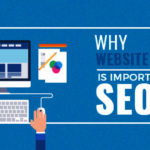Building links inside the content is still a relevant idea, but you cannot ignore SEO in the times of customized search. The relevance of your content, its structure and the general experience of the user also determine the way your website attracts search engine results.
Debates have been going on across the cyber world regarding the use of tags in SEO customization. SEO tags had an evident say in the ranking of websites, but they have gone controversial as on page SEO.
In this scenario, it becomes increasingly important to understand the role of various tags and analyze their impact on SEO performance.
With search engines coming up with smarter ways for reading the interpretation of online data, manipulative use of tags in an old manner is virtually out of the game.
However, more efficiently combined tags coupled with some other SEO customization can do wonders for your website.
1. Meta description tags
Meta description tag usually refer to some unique stats mentioned differently as compared with other texts and contain a title and relevant URL.
They are used to more eager users to dig deep into a particular subject. It has a significant impact on the user experience and imparts more prosperous expertise and positivity in the mind of users.
However, a mindless addition of Meta description tags may have quite the opposite impact on the user as you might expect. Meta descriptions affect the number of clicks user gives on your page and decreases the look away rates.
There are specific ways too for placing Meta description tags in the content. They should be inviting and related to the topic. The preferred material should also be quality work and should not give a feeling of betrayal.
It should be realistic and customized in the way a user would perceive.You should provide a unique and unique Meta description tag for your page, which reflects the subjects your page carries. Most significant keywords should be included. However, overuse should be avoided.
2. Title tags
It refers to the particular part of the page which reflects the title of the page. It looks like a clickable headline and also a part of the heading which appears on social media platforms and in browsers.
It gives users a general overview of what the page is meant to explain. Though it is no longer a solution to every problem, it still exists as a relevant thing a searcher would find.
It is the tag, which mostly tempts the user to decide whether the page will contain the content or not that he tends to search.You should provide an accurate and precise title for your page which gives a sense of assurance that he would get the content of his desire.
Make sure that your heading does not exceed 50-60 words. Use keywords naturally and place important ones ahead of others.
3. Italian and bold tags
For adding particular emphasis to certain words and imparting individual highlights for some parts, bold and Italian tags are used.
Though they do not comprise of essential metatags to utilize, they do add readability and improve the user experience. Use these tags only for those parts which are necessary. Avoid overuse of these tags.
4. Image alt keywords
These tags are used for highlighting the contents of an image. They do own significance for on-page optimization since they provide attributes to the pictures and materials.
As search engines cannot see the photos, they only are responsible for attracting search engine results and abstract visibility for the page.
5. Heading tags
This point to the labels, which are used to separate headings and subheadings from the other content. H1 to H6 comprises of the hierarchy for heading tags. UnlikeMetatags, they are visible to users and the most significant metatag, giving a glimpse of what the page acknowledges.
Their usage though has been a subject of debates in recent times, but proper utilization of H1 heading tags has been emphasized in many studies. Awkward usage of heading tags can keep a majority of traffic away and decrease the search engine ranking.
Search engines prefer to look for organized and well-structured content rather than crawling through the unorganized content.Headings help users navigate through the material and digest it.
These small details add up to significant SEO optimization and enhance the visibility of the page. Use H2-H6 is necessary. Add H1 tags with keywords and use secondary keywords within the paragraph.
6. Schema markup
It is a shared markup, which has been identified by search engines to organize data logically. It refers to meaningful tags where the shift seems to take from backlinks and keywords only to the relation between concepts and contents of the page.
Adding schema tags to the page enhances user experience and imparts significance to the SERP.
Bounce rates and user experience factors like CTR add up to the results search engines gives for your page. For proper utilization of schema tags, study the available tags and create a map plan how to use them during the content. Use structured data markup and make sure that they are not misleading and ineffective.
Takeaway
If you desire to boost your SEO for your website, make sure you don’t ignore the little tags available for your page. Not all tags are equally important. Some have more significance than others while some are must ones.
However, using tags at proper places and according to the content can significantly change the search engine results for your page in a positive way. Use the tags wisely and see the magic.










